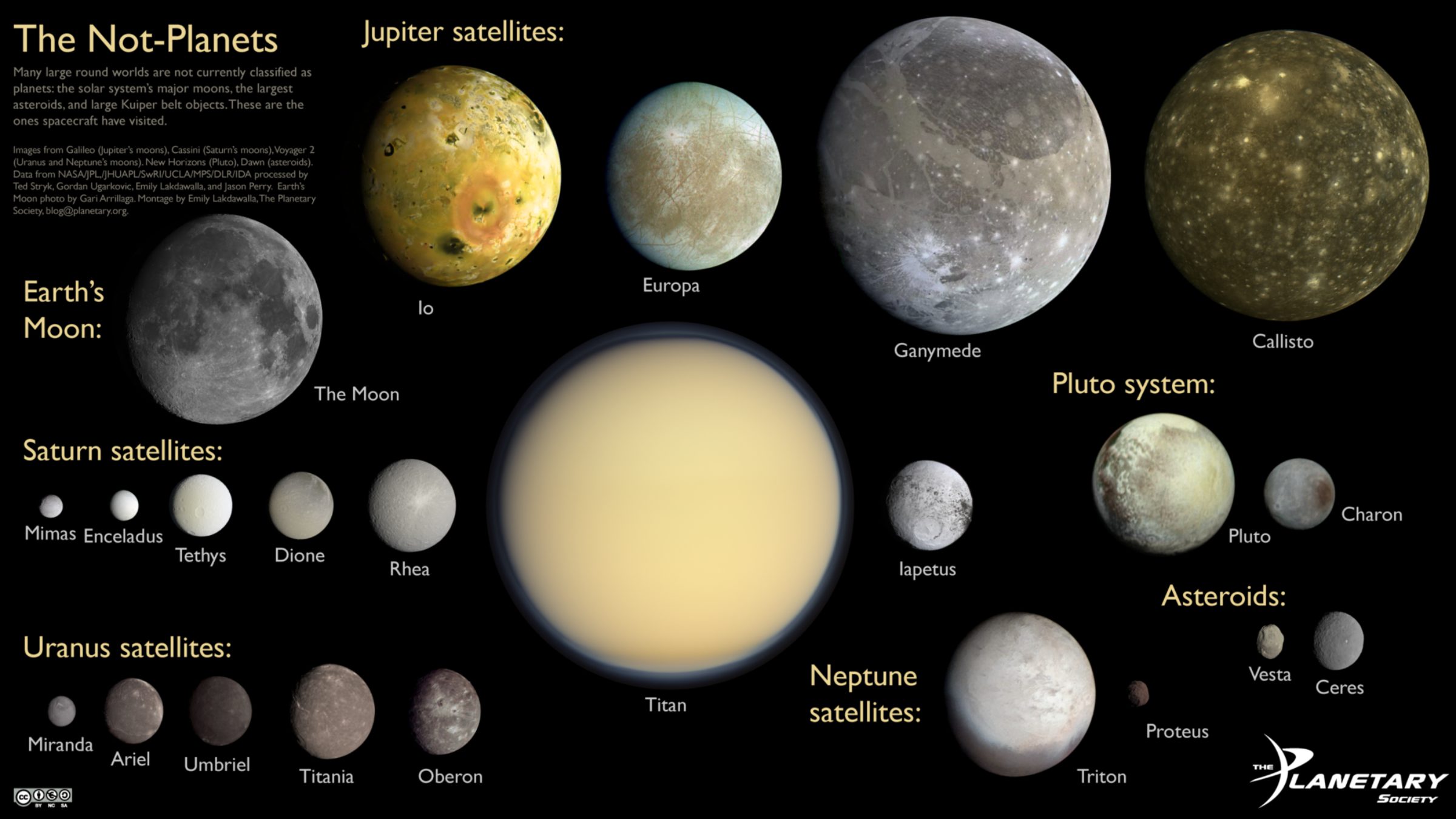Emily Lakdawalla • Jul 14, 2015
The not-planets
Now that I have a reasonable-resolution global color view of Pluto, I can drop it into one of my trademark scale image montages, to show you how it fits in with the rest of the similar-sized worlds in the solar system: the major moons and the biggest asteroids.

It's just an accident that Pluto wound up next to Iapetus and Triton, which I think are the two best analogs for what we can see on Pluto's surface. Yet Pluto stands out for its uniquely ruddy color. Charon, too, is unique, for its dark pole, but there are similarities to the similar-sized worlds on the left side of the diagram: Ariel and Dione in particular.
These are the not-planets. Their non-planetary status is a handicap because these are the worlds that we need to get Earthlings excited about exploring. Titan's strange hydrology -- Enceladus' geysers -- the subsurface oceans of Europa and Ganymede -- the dynamic surfaces of Triton and Pluto. And beyond all the worlds pictured here, there are hundreds of Kuiper belt objects that I would include on this montage if we had ever visited them up close. But we haven't yet. So much undiscovered country yet to explore -- but they're all worlds that much of the public is not familiar with.
I've exhorted you readers before on this topic, and I'll do it again: please go out and show your friends and family how cool these worlds are, and how much worth exploring. Help people learn their names, and help them understand how fascinating and mysterious they are.
Support our core enterprises
Your support powers our mission to explore worlds, find life, and defend Earth. You make all the difference when you make a gift. Give today!
Donate

 Explore Worlds
Explore Worlds Find Life
Find Life Defend Earth
Defend Earth

